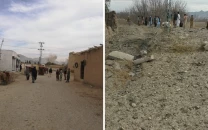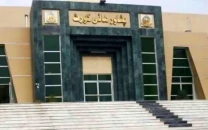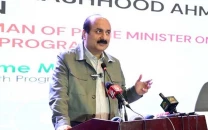Past decade: How judiciary played role in shaping Pakistan's politics
Disqualified two premiers Gillani and Sharif as well as three dozen MNAs since 2009

The Supreme Court of Pakistan. PHOTO: AFP

Since its restoration in March 2009, the superior judiciary has remained a key player in shaping the country’s politics.
Seven former chief justices, Iftikhar Muhammad Chaudhry, Tassaduq Hussain Jilani, Nasirul Mulk, Jawwad S Khawaja, Anwar Zaheer Jamali, Mian Saqib Nisar and Asif Saeed Khosa worked for the purpose after the judiciary’s restoration through a mass movement of political parties and lawyers that year.
The legal experts believe that though the superior judiciary has emerged as a powerful institution by giving rulings against all departments and government functionaries, democracy has been weakened in the country.
Instead of giving space to the political leadership, the top judges gave them a tough time on different issues in the last one decade, especially during the PPP and the PML-N regimes. Even two prime ministers – PPP’s Yousaf Raza Gillani and PML-N’s Nawaz Sharif -- were disqualified by the Supreme Court while three dozen MNAs were also disqualified on the basis of fake degrees, dual nationalities and non-disclosure of assets in their nomination papers. Likewise, a few of them were convicted in contempt matters.
A section of legal experts alleges that the apex court exercised its public interest litigation for “political engineering” in the country after restoration of judiciary.
Senior bar member Raheel Kamran Sheikh in February 2018 wrote a letter to senior bar fellows, expressing concern over the judicialisation of politics.
Judicial activism was on its peak during the tenure of former CJP Chaudhry as judiciary dominated the role of the executive and the legislatures.
The apex court led by the then CJ Chaudhry gave judgments against its own judges, top government functionaries, parliamentarians, armed forces, Election Commission of Pakistan (ECP), several chiefs of two investigation agencies – NAB and FIA – and media-persons since March 2009.
After the issuance of judgment to declare the National Reconciliation Ordinance unconstitutional in December 2009, confrontation between the SC and the PPP-led government started, which continued for four years. The SC initiated contempt proceedings against two PPP premiers in the NRO case during the PPP tenure (2008-13). Former PM Gillani was disqualified in a contempt case while several top officers like law secretaries, attorney generals and NAB officials were ousted due to the court’s proceedings over the implementation of its judgment in the NRO case. Both the PPP premiers – Gillani and Raja Pervez Ashraf – had appeared before the apex court six times. After a three-year-long tussle between the executive and the SC, the PPP-led government finally implemented the court’s judgment by writing a letter to the Swiss authorities, but the Swiss government conveyed to the Pakistani government that alleged corruption cases against the then President Asif Ali Zardari could not be reopened.
After the retirement of CJ Chaudhry in December 2013, the superior judiciary led by successors, especially Justice Jilani and Justice Mulk, adopted a policy of judicial restraint. There was no undue interference in other institutions’ affairs during their tenures. Likewise, majority judges rejected the constitution petitions against the 18th and 21st constitution amendments in 2015. However, eight judges held for the first time that parliament’s powers to amend the Constitution are subject to implied limitations. Even a judicial commission led by CJ Nasirul Mulk rejected the PTI’s allegations of rigging in the 2013 elections.
The 15-month tenure of Justice Anwar Zaheer Jamali was more or less a continuation of the ‘judicial restraint’ policy adopted by his two predecessors. During his last days, Justice Jamali took up PTI’s petition seeking disqualification of former premier Nawaz Sharif in the wake of the Panamagate scandal. However, the matter could not be decided during his tenure.
After his retirement, Justice Saqib Nisar became the new CJP. Justice Nisar visibly changed his approach in the last year of his tenure and started a unique judicial activism, which was completely different from what he did as a superior court judge throughout his 20-year career.
Justice Nisar had been pro-executive throughout his career but in his last year he became skeptical about powers of the executive. He had been skeptic about the public interest litigation under Article 184 (3) of the Constitution but became a strong proponent of exercising suo motu powers.
After his retirement in January 2019, Justice Asif Saeed Khosa became the CJP. He also retired on December 20. His short tenure will be remembered in the judicial history for many years. He totally focused on improving the criminal justice system in the country. Justice Khosa adopted the policy of judicial restraint and did not interfere in executive affairs. He did not take a single suo motu notice on governance issues.
President Arif Alvi administered the oath to Justice Gulzar Ahmed as the chief justice of Pakistan on December 21.



















COMMENTS
Comments are moderated and generally will be posted if they are on-topic and not abusive.
For more information, please see our Comments FAQ